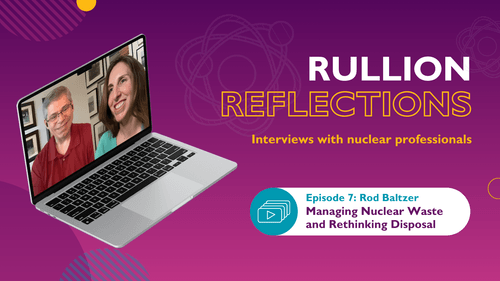Executive Search: Why Leadership Hiring Needs a Different Approach
What’s really at stake when hiring into the C-suite, especially in critical infrastructure? According to Asif Salam, Practice Director of Executive Search at Rullion, it’s about more than just finding someone competent. It’s about protecting multi-billion-pound projects, maintaining public trust, and navigating risks that aren’t always visible on a CV.
In this blog, Asif breaks down what executive recruitment really looks like - what keeps infrastructure leaders up at night, where hiring often goes wrong, and how organisations can approach it differently.
What Executive Search Really Means
Executive search is often misunderstood. People think it’s just a more expensive version of recruitment, or only relevant when hiring a CEO. The truth is, it’s much more strategic.
"Executive recruitment isn’t just about who’s in your network. It’s about understanding what the business truly needs and how to go out and find that person - often before they even know they’re ready to move," says Asif.
Traditional recruitment is reactive. Executive search is proactive. It’s built around partnership, designed for senior and specialist roles where there’s no room for error. It relies on deep sector knowledge, a structured process, and high-trust relationships on both sides of the table.
At Rullion, we work closely with boards, CEOs and investors to define what success really looks like. Learn more about our approach to Executive Recruitment. From there, we craft a tailored search strategy to find the leader who can deliver it.
When to Use Executive Search
So, when is executive search worth the investment? The simple answer: when the cost of getting it wrong is higher than the cost of getting it right.
We’re typically brought in when there’s a high-stakes appointment; a confidential leadership transition, a role requiring specialist skills, or a situation where internal bandwidth is stretched. It’s also the right choice when entering new territory, whether that’s scaling into new markets or transforming internal systems.
Whether it’s a first-time COO in a renewables firm or a fractional CTO for a digital shift, the goal is the same: long-term fit, not a quick fix.
What Makes Executive Search Work (or Fail)
Successful searches are grounded in clarity, alignment and trust. When things go wrong, it’s usually because the search is treated like a transaction.
One common pitfall? A weak or shifting brief. If stakeholders aren’t aligned on what kind of leader they need - or are hiring reactively after a problem - things unravel quickly.
"Leaders don’t wake up thinking they’re the problem. But sometimes they are," Asif notes. "The best leaders assess themselves as often as they assess their teams."
Another major blind spot is at the top. Leaders don’t always recognise when they’re part of the challenge. In sectors like infrastructure, self-awareness at senior level can be the difference between project success and failure.
The best outcomes come when clients are honest about their challenges and open to fresh insight, not just from the market, but internally too.
The Biggest Misconceptions About Executive Search
Despite its value, there are still a few myths that need busting:
"It’s only for CEOs." Not true. We work across C-suite and critical leadership roles.
"It’s just expensive recruitment." It’s actually a strategic safeguard against hiring risk.
"We can do it in-house." Internal teams often don’t have the reach or discretion for sensitive hires.
"It’s all about contacts." Networks help, but insight, alignment and rigour drive results.
"You get a shortlist, then you’re on your own." A good partner stays close, through onboarding and beyond.
Why It’s Critical in Infrastructure Sectors
Infrastructure isn’t just high-stakes, it’s high-impact. Mistakes aren’t hypothetical. The wrong leadership hire can delay delivery, invite public scrutiny, and disrupt entire ecosystems.
"Cybersecurity, AI, and workforce shortages - these are no longer IT or HR issues. They’re board-level risks," says Asif. "Yet many leaders still treat them like background noise."
One of the biggest concerns leaders talk to us about is project execution. There’s often pressure to start spending before proper groundwork is in place (engineering plans, supply chains, compliance). Without the right leadership, projects stall.
The sector is also facing a skills crunch. Experienced engineers are retiring, while digital and cybersecurity risks are growing. Many organisations are stuck between outdated systems and an uncertain future.
When safety, governance and public trust are on the line, the margin for error is slim. That’s why the right hire matters so much.
The 5 Benefits of Executive Recruitment
Working with the right executive recruitment partner can make a measurable difference. It’s not just about filling roles, it’s about:
- Reducing the risk of mis-hire in business-critical positions
- Accessing passive talent that isn’t on the market
- Saving time for internal teams under pressure
- Ensuring cultural alignment and long-term fit
- Navigating sensitive or high-profile transitions discreetly
Choosing the Right Executive Search Partner
If you’ve never used executive search, or had a disappointing experience, it’s worth asking different questions this time.
This isn’t about who has the biggest black book. It’s about judgment, process and partnership. Ask your search partner how they challenge briefs. How they validate candidates beyond the CV. And how they stay involved after placement.
At Rullion, our Executive Search team focuses on regulated and technical environments where trust and cultural fit are critical. We don’t just fill roles. We help shape futures.
Final Thoughts
Hiring executive talent isn’t just about filling a position. It’s about future-proofing your organisation.
Done well, executive recruitment brings clarity, confidence and continuity. Done poorly, it creates risk, cost and disruption. That’s why choosing the right partner matters.
Executive recruitment isn’t a luxury. It’s how you protect your momentum, your mission and your reputation.
From energy to utilities, we understand the unique challenges these sectors face. Discover how we launched our Executive Search solution to help organisations make senior leadership hires that drive long-term performance.
Watch the full interview, Confessions of an Executive Search Expert, Ep. 01:
We’ve supported some of the UK and Europe’s most complex infrastructure organisations in making senior leadership hires that drive long-term performance.
Whether you're exploring executive search for the first time or need a partner you can trust to get it right - discreetly and decisively - we're here to help you get work done. Book a discovery call with our Executive Search experts today.





